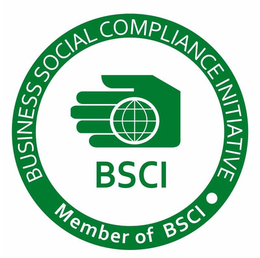**BSCI certification** and **Sedex certification** are both audit systems focusing on social responsibility in supply chain management. While their goals are similar, there are some significant differences in their execution and framework:
### 1. **Background and Governing Bodies**
– **BSCI (Business Social Compliance Initiative) certification**:
– Launched by the **Amfori** (Foreign Trade Association of Europe), it focuses on safeguarding labor rights in supply chains.
– It provides a unified code of conduct for social responsibility, requiring factories to comply with international labor standards, working conditions, and compensation.
– **SEDEX (Supplier Ethical Data Exchange) certification**:
– Managed by the **SEDEX global platform**, it helps businesses share information about ethics and social responsibility in the supply chain.
– SEDEX is not a certification system itself but a data exchange platform where companies share and manage data for **SMETA (Sedex Members Ethical Trade Audit)** audits.
### 2. **Nature of Audits**
– **BSCI**:
– BSCI audits are conducted according to a unified standard, with factories undergoing compliance checks through third-party auditors.
– The audit focuses on labor rights, working environment, working hours, wages, health and safety, and environmental compliance.
– Audits are conducted on a regular cycle, requiring factories to be reviewed periodically.
– **SEDEX**:
– SEDEX itself does not conduct audits but uses the **SMETA** audit system, which is a member-driven ethical trade audit.
– SMETA audits have different modules, allowing customers to choose specific audit areas (e.g., environment, labor, health and safety, business ethics).
– Factories can undergo SMETA audits and upload the results to the SEDEX platform for clients to review.
### 3. **Scope of Coverage**
– **BSCI**:
– Primarily focuses on global supply chains, especially in the European market.
– Its focus is on social responsibility compliance at the factory level, with a unified global standard for audits.
– **SEDEX**:
– A global supply chain management tool used across industries.
– It allows companies and suppliers to share social responsibility data through the platform, enabling customers to request specific audit details.
### 4. **Audit Objectives**
– **BSCI**:
– Its goal is to improve social responsibility standards across global supply chains, ensuring factories adhere to codes of conduct, particularly concerning labor rights.
– **SEDEX**:
– Its goal is to facilitate better management of social responsibility issues in the supply chain through data sharing, promoting transparency and accountability. It allows companies to choose audit focus areas based on their needs.
### 5. **Transparency and Data Sharing**
– **BSCI**:
– Audit results are typically for the factory’s self-assessment or for customer requests. Audit reports are not actively shared and are generally only available to the factory and its clients.
– **SEDEX**:
– Emphasizes data sharing. Companies can view suppliers’ audit reports and compliance information through the platform, ensuring greater transparency.
### 6. **Recognized Clients**
– **BSCI Certification**: Recognized by the following clients:
1) **European and American Retailers**:
– H&M
– Zara (Inditex Group)
– Primark
– C&A
– ALDI
– Lidl
– Marks & Spencer (M&S)
– Esprit
– Carrefour
– Metro
2) **Home and Lifestyle Brands**:
– IKEA
– Tchibo
– Otto Group
3) **Sports Brands**:
– Adidas
– Puma
4) **Luxury and Fashion Labels**:
– Hugo Boss
– Tommy Hilfiger
– **Sedex Certification**: Recognized by the following clients:
1) **Retailers**:
– **Tesco**
– **Marks & Spencer (M&S)**
– **Sainsbury’s**
– **Walmart**
– **Aldi**
– **Lidl**
– **Carrefour**
– **Metro**
2) **Fashion Brands**:
– **H&M**
– **Zara (Inditex Group)**
– **Primark**
– **ASOS**
– **Esprit**
3) **Sports Brands**:
– **Nike**
– **Adidas**
– **Puma**
4) **Luxury and Fashion Brands**:
– **Hugo Boss**
– **Burberry**
– **Tommy Hilfiger**
5) **Home and Consumer Goods Brands**:
– **IKEA**
– **Unilever**
– **Reckitt Benckiser**
– **Tchibo**
– **Procter & Gamble (P&G)**
6) **Food and Beverage**:
– **The Coca-Cola Company**
– **Nestlé**
– **Unilever**
### 7. **Audit Result Evaluation**
– **BSCI**:
– BSCI audit results are graded as A, B, C, D, or None. Generally, a grade of C or above is acceptable to most clients, though stricter clients may require a B grade. Our company, Top Jewelry Ltd., achieved a B grade in this year’s BSCI audit.
– **SEDEX**:
– SEDEX audit results do not display scores or grades, so whether the report is accepted depends on the client’s evaluation system. SEDEX audit reports come in two types: 2-Pillar and 4-Pillar, with the latter including additional requirements for environment and business ethics.
### 8. **Audit Application Process**
– **BSCI**:
– BSCI applications require authorization from a BSCI member client (RSP approval), allowing the factory to apply for an audit through a third-party audit company. This makes the process more strict and complex.
– **SEDEX**:
– SEDEX allows factories to register as members on the SEDEX website and apply for audits, offering more flexibility and convenience for factories.
### Summary:
– **BSCI** is more of a unified social responsibility audit standard, focusing mainly on labor conditions at the factory level with consistent audits.
– **SEDEX** is a data-sharing platform that uses audits like SMETA to assess social responsibility. Companies can choose the audit focus areas they need and share data through the platform.
– Our factory, Top Jewelry Ltd., holds both BSCI and SEDEX-4Pillar audit reports, which we update annually. If you need the latest reports, feel free to contact us at sales@top-jewelry.cn or sales@top-jewelry.net.
Related articles:
*Understanding the Purpose of BSCI Audits for Clients
*Which well-known brands require factories to obtain BSCI certification
*About the latest BSCI certificate and report from Top Jewelry Ltd
*Understanding the BSCI Code of Conduct, Principles, and Differences with SA8000
*How Much Does BSCI Certification Cost and How to Apply for It?
*Document Checklist for CSR Audit (China): A Guide to BSCI Audit Requirements
*Understanding How BSCI Auditors Conduct On-Site Audits in Factories (amfori BSCI Audit Plan)


